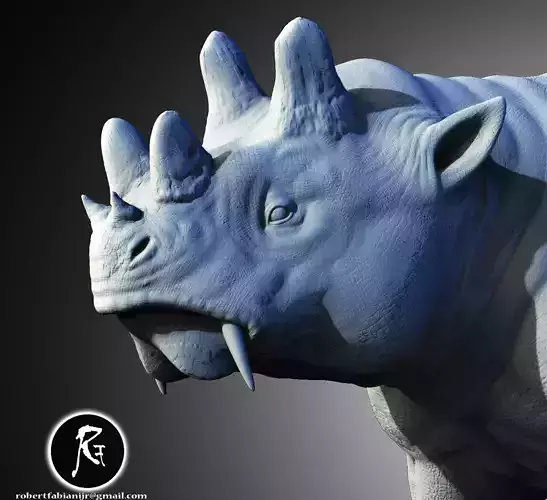1/2
Uintatherium was one of the largest land mammals of the Eocene epoch, living around 56 to 37 million years ago in what is now North America. It belonged to a now-extinct group called dinoceratans, known for their bulky bodies and strange skull features. Uintatherium stood about 4 feet (1.2 meters) tall at the shoulder, stretched over 13 feet (4 meters) in length, and could weigh more than 2 tons.
Its most striking features were the six bony knobs or horn-like projections on its skull and a pair of large, saber-like canine teeth in males, likely used for defense or mating displays. Despite its fearsome appearance, Uintatherium was a herbivore, feeding on soft vegetation such as leaves and aquatic plants. It had a massive, barrel-shaped body supported by short, sturdy legs, and likely moved slowly across the prehistoric floodplains.
Uintatherium’s fossils were first discovered in the Uinta Basin of Utah, which inspired its name. As one of the earliest large herbivorous mammals, it represents an important step in the evolution of megafauna after the extinction of the dinosaurs.
REVIEWS & COMMENTS
accuracy, and usability.


